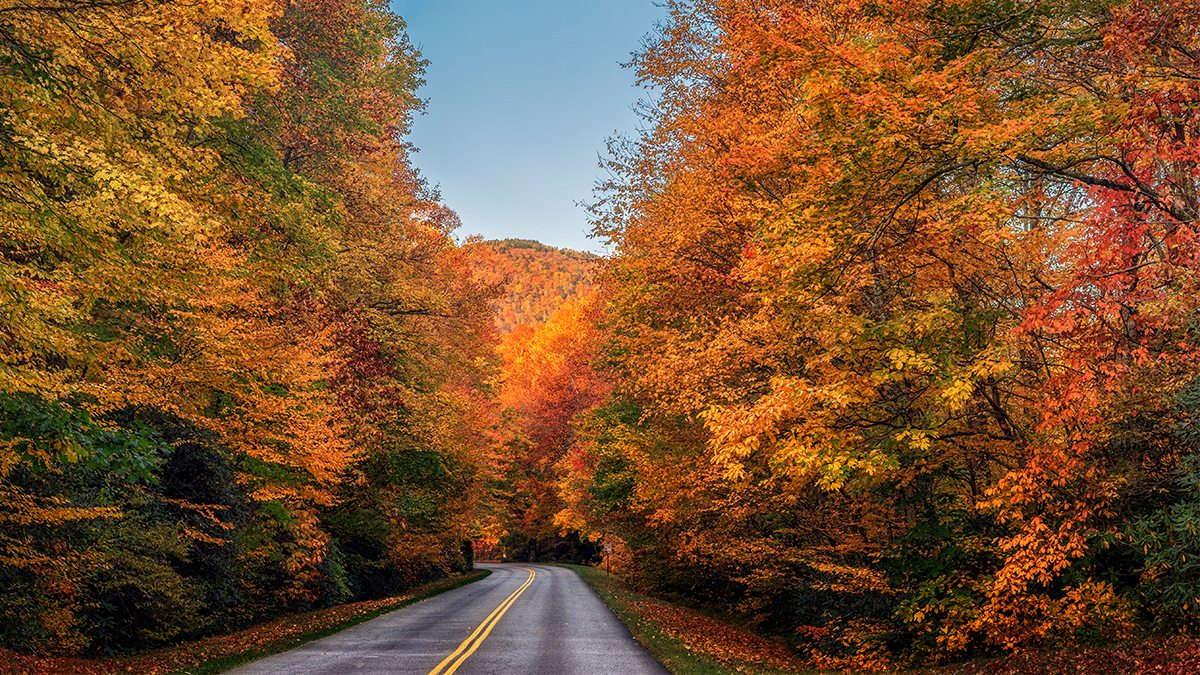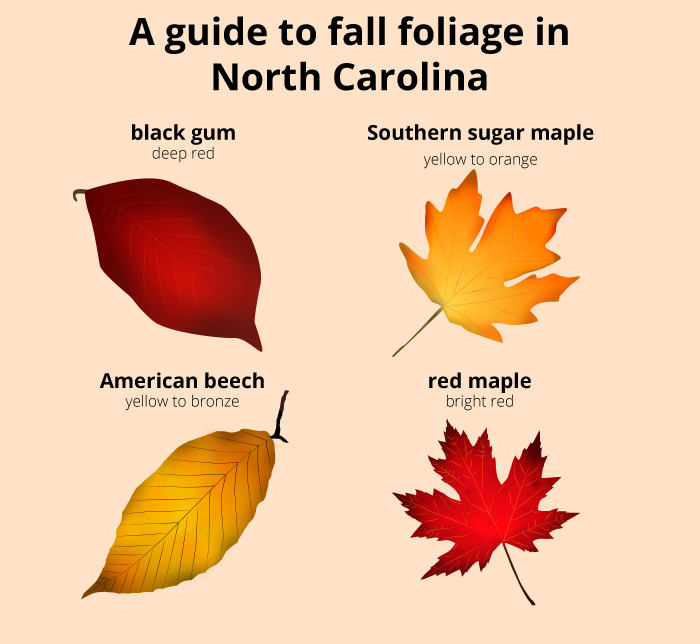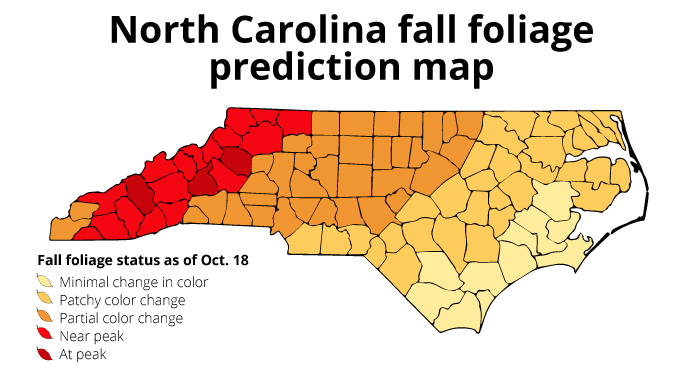The science behind fall foliage
Why do leaves change color in the fall, and when is the best time to go “leaf-peeping”? The North Carolina Botanical Garden’s Johnny Randall, who says conditions this year are near perfect, answers your fall color questions.

“Fall, leaves, fall; die, flowers, away;
Lengthen night and shorten day;
Every leaf speaks bliss to me
Fluttering from the autumn tree.”
— excerpt from “Fall, leaves, fall” by Emily Brontë
Every autumn in North Carolina, we get a natural art show when leaves begin to transition from green to yellow and then into vibrant reds, oranges and purples. But what causes this transition, and why does the timing and color of this show vary from year to year?
The Well spoke with Johnny Randall, director of conservation programs at the North Carolina Botanical Garden, about the chemical processes and conditions behind the yearly transformation and when we should expect to see peak fall color across the state this year.
Why do leaves change color in the fall?
Leaves create the nutrients necessary for trees to grow and survive. This process takes place in cells containing chlorophyll, which absorbs light energy for photosynthesis. During the spring and summer green-pigmented chlorophyll covers carotenes that are yellow, orange and red.
In the fall, there are fewer hours of daylight and temperatures drop, which signals to the plant to form a corky abscission layer between the leaf and stem, cutting off the leaf’s support system. Chlorophyll begins to break down, and as the leaves die, the green pigment disappears, and the yellow, orange and red carotenes become visible, giving leaves their beautiful fall colors.
What benefit do trees derive from their leaves changing and falling?
It gets colder with shorter day lengths during winter, and rather than expend any energy to maintain their leaves, trees shed them and go dormant. Additionally, large boughs of leaves would hold so much snow or ice that a tree’s limbs might snap off.
Conifers like pines, spruces, firs or cedars are evergreen because they have needles or scale-like leaves with a waxy coating, which are better at conserving water year-round, and the needles hold less weight than a broad leaf.
Why is there such a variety in the colors that leaves turn?
There are numerous factors that determine the color: Some species have a distinct shade, but some species vary widely from tree to tree depending upon the weather, the amount of light that hits the leaves and how much chlorophyll and/or sugar remains in the leaves. With a little practice, you can identify trees purely by their fall color and leaf shape. Some species you’ll see in the Triangle are black gums (deep red), Southern sugar maples (yellow to orange), red maples (bright red), hickories (bright yellow) and American beeches (yellow to bronze).

(Illustration by Leighann Vinesett/UNC-Chapel Hill)
What factors create a perfect fall foliage season, and what should we expect this year?
Dry weather, bright, sunny days and cold but not freezing nights are optimal conditions for vibrant fall color. This year we have almost-perfect conditions: very little rain, sunny days and gradually declining temperatures at night. We should expect for the leaves to change one or two weeks later than usual this year because of the warmer-than-average weather.
When will leaves be at their peak across North Carolina?
In the highest elevation points in the western part of the state, like Mount Mitchell or Grandfather Mountain, the leaves are at their peak now, in mid-October. We’ll see the best color in the central part of the state in late October to early November, and the coast will be around two weeks behind us. But that all depends on the weather staying in this pattern of sunny days and cool nights — if we get lots of rain or overcast days in a row, there will be diminished fall color.

(Illustration by Leighann Vinesett/UNC-Chapel Hill)
Where are the best places to go for a good view of the changing colors in North Carolina?
The mountains are always a popular destination because you can see over a longer distance, but you can see great color in areas closer to the Triangle too. Hanging Rock State Park is two hours away from Chapel Hill, Occoneechee Mountain State Natural Area is less than half an hour from the University, and the Botanical Garden has several locations where you can see great fall color and practice your leaf identification.
The Piedmont Nature Trails behind the Garden’s Allen Education Center and Battle Park on campus both have short trails for a quick walk, and one of my personal favorite hikes is looping through the Parker Preserve down into the Mason Farm Biological Reserve and back.




